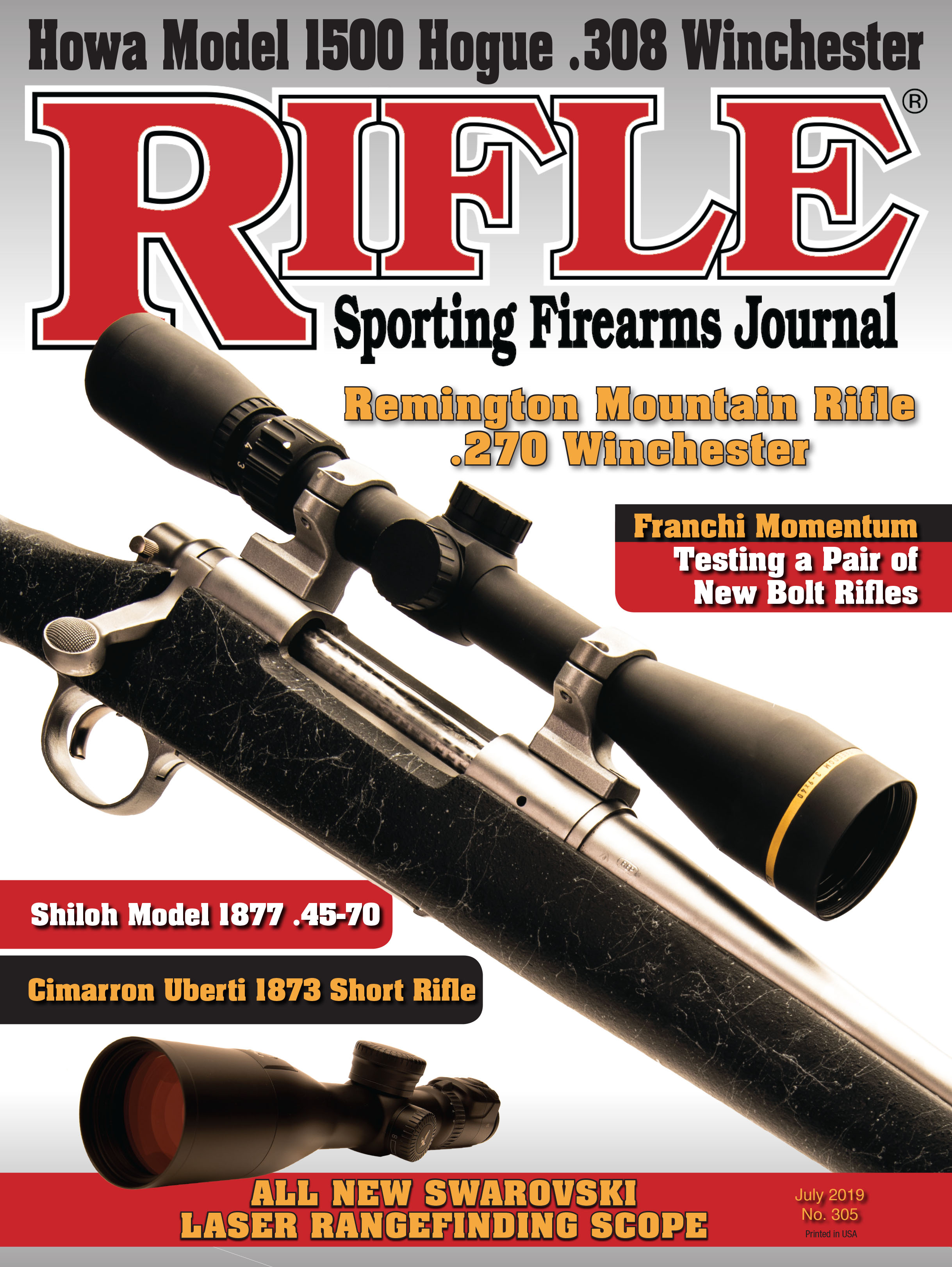A Rifleman's Optics
Swarovski dS 5-25x 52mm P
column By: John Haviland | July, 19
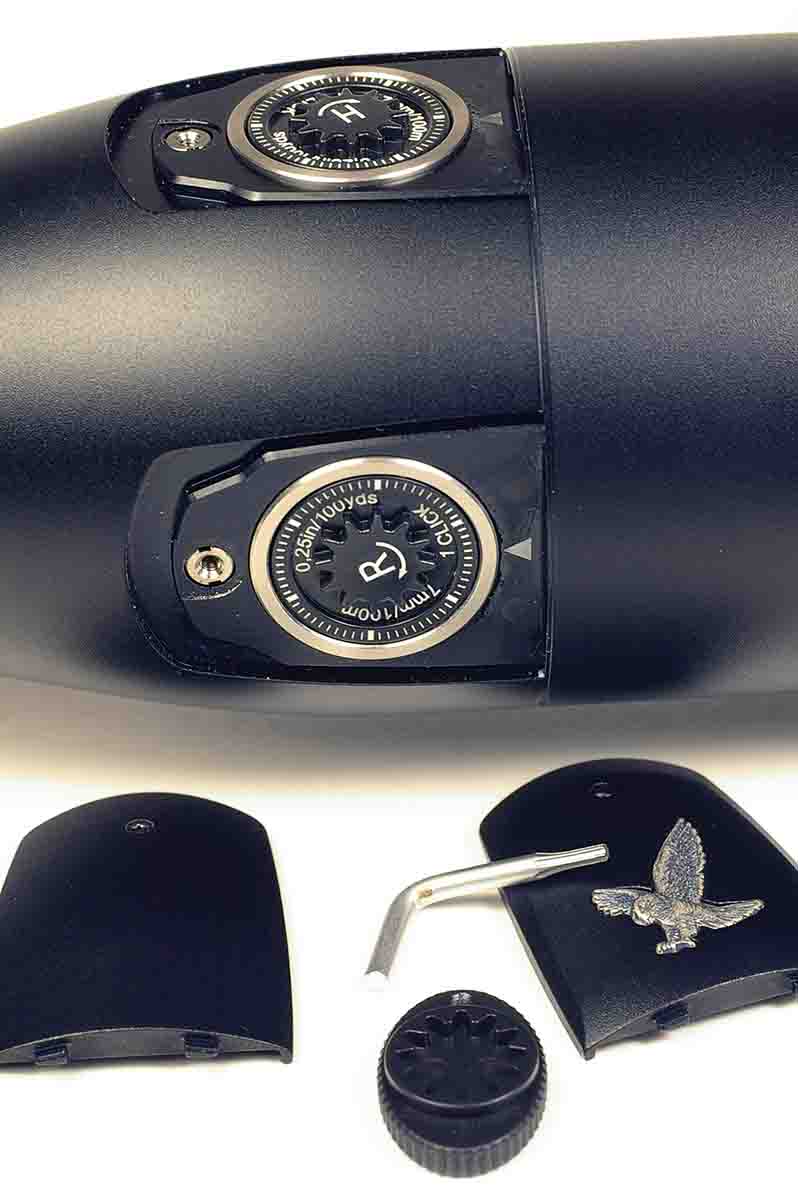
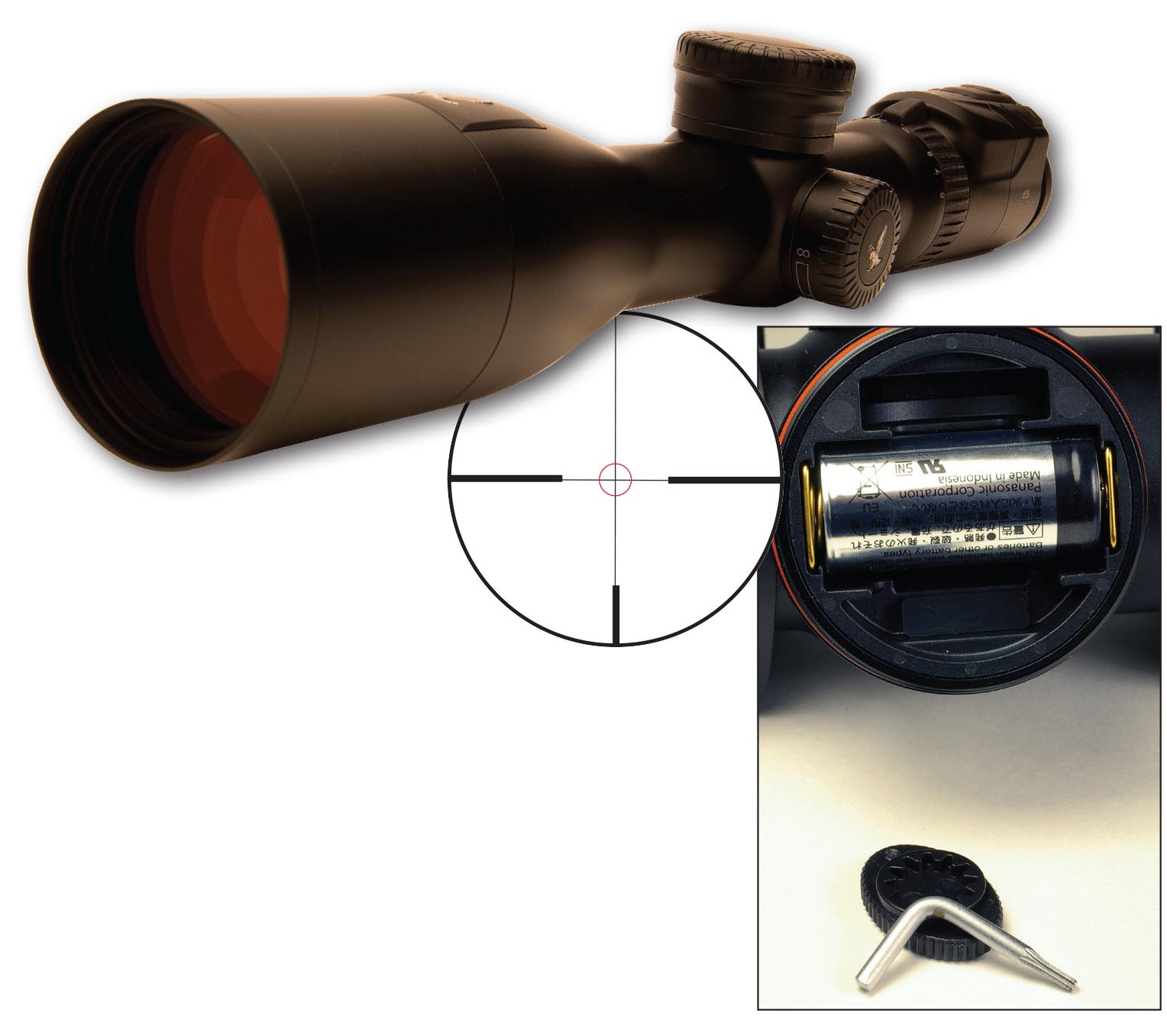
Swarovski’s new dS 5-25x 52mm P scope includes a laser rangefinder and ballistic computer that, with a push of a button, measures exact distance to a target and immediately displays an aiming point to compensate for bullet drop at that distance.
The dS (digitalSmart) is fairly-well shaped like a traditional scope. However, integrating all those electronics and optics requires space, so the dS weighs 38.4 ounces and measures 15.87 inches in length with a 40mm main tube.
Looking through the dS without the reticle illuminated reveals plain crosswires thickened at the ends. It can be aimed like a regular reticle. Elevation and windage adjustment dials are located under caps on the objective bell. A Torx wrench for removing the caps and an adjustment tool for turning the dials are stored inside the battery compartment. Screws are held captive in the caps, so there is no worry of losing them.
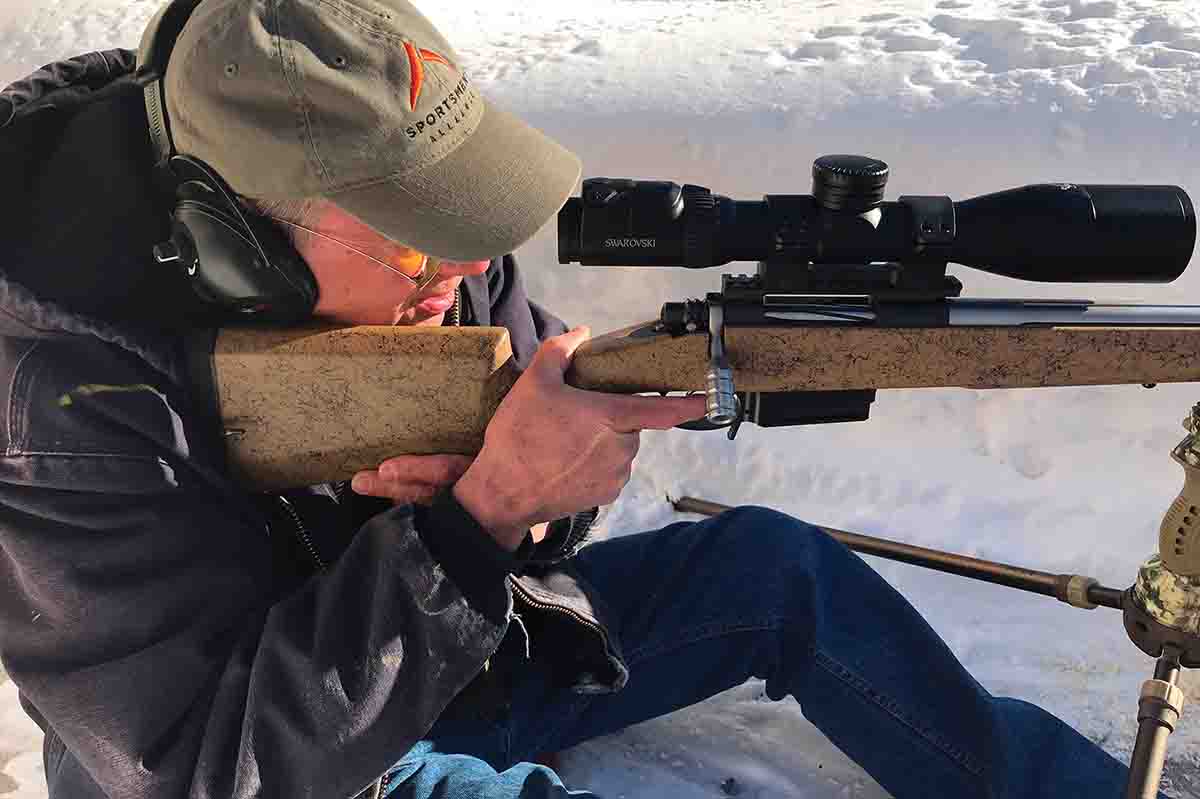
A handload can also be entered. In my case, the dS was mounted on a Cooper Firearms Raptor .22-250 Remington shooting handloads consisting of Berger 64-grain FB Varmint bullets hitting on aim at 100 yards with a muzzle velocity of 3,325 fps. Also entered are elevation, temperature, air pressure, sight height above the bore and display time of 40, 60 or 80 seconds. Ninety-degree wind drift for 5 to 10 mph, or 10 to 20 mph, can be selected for the entered load.
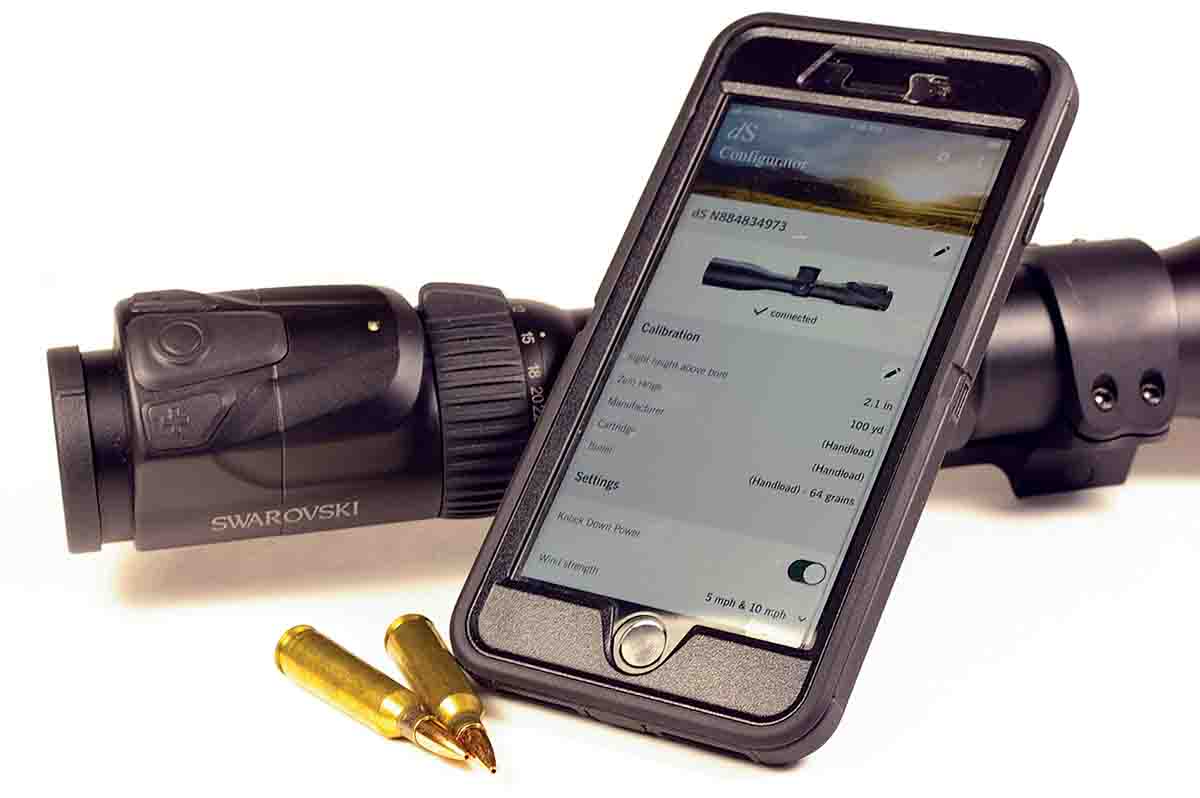
Bluetooth transfers the ballistic information on the app to the dS. Holding down the + and – reticle illumination buttons on top of the scope’s ocular housing for three seconds activates Bluetooth in the scope. A blinking green light just ahead of the buttons indicates the dS is enabled. Pushing the “Transfer now” button on the app transfers the ballistic data. The app is no longer required unless changes to the data, like temperature, are required.
The range measurement button on the top of the ocular housing is easy to reach and feel while your eye is busy looking through the scope. Pushing and holding down the button lights up a generous circle in the center of the
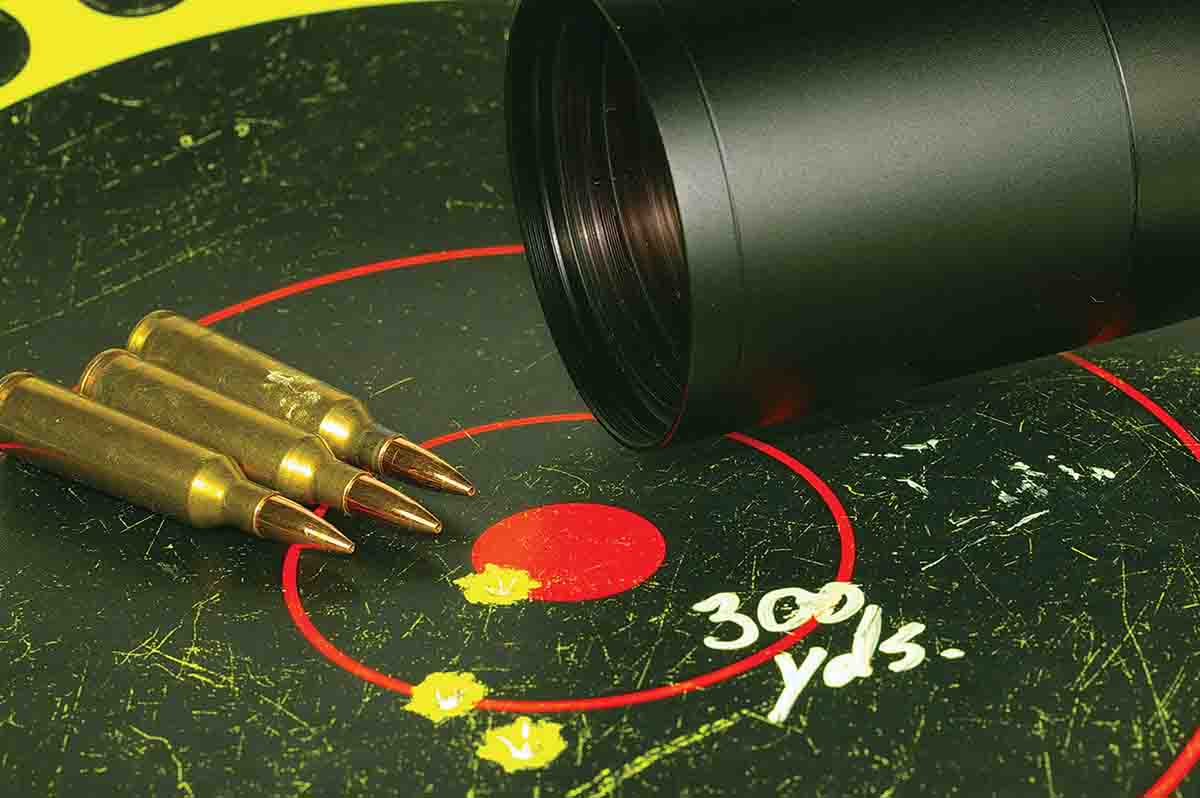
Swarovski states the dS measures distance from 33 yards out to 1,500 yards and provides an aiming point correction out to 1,120 yards. The dS instantly displayed distances to small buildings and large evergreen trees at well over 1,000 yards. I took readings on small buildings, and distances of 1,162 and 1,216 yards immediately appeared. However, “Over Ballistic Range” showed at the right side of the view. That warning may also appear when the aiming angle is greater than 45 degrees at targets up to 656 yards, or greater than 30 degrees between 656 and 1,200 yards.
With readings of 1,088 and 1,105 yards, a symbol appeared at the bottom of the vertical wire, indicating the aiming point was located below the field of view. Reducing magnification widened the view and displayed the aiming point. Aiming points were presented at 951 and 967 yards with the magnification turned all the way up to 25x. Heavy snow started to fall, and I thought it would stop the laser from working. The dS calculated a distance of 247 yards to a building as far away as I could see through the snow.
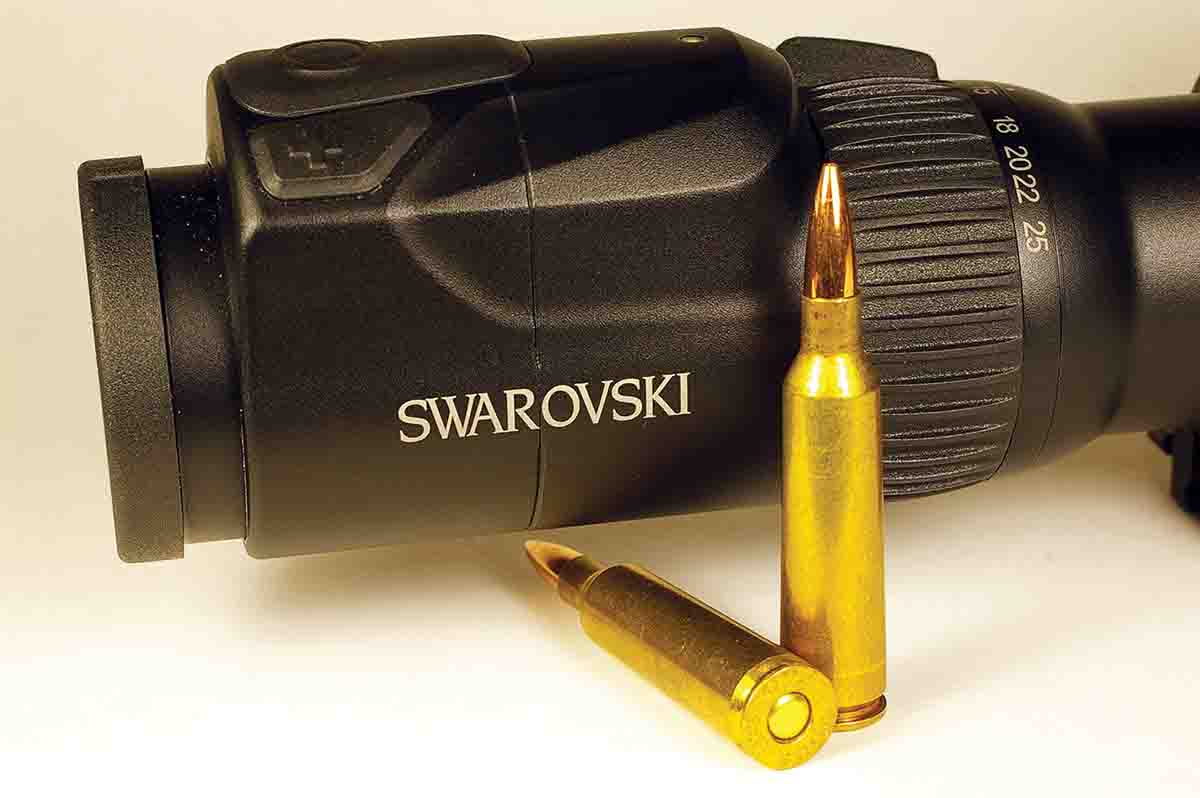
I started shooting at a one-inch diameter red circle at 300 yards. The dS, though, stated a range of 299 yards. The reticle illumination was set fairly high, and the 5- and 10-mph windage hash marks on both sides of the center made it difficult to distinguish the aiming dot.
With magnification set on 12x, three bullets hit 2 inches below the dot with a 2.94-inch horizontal spread to the bullets.
Turning down reticle illumination intensity and turning up magnification helped clearly see the dot. Also, on the dS Configurator app, reticle line thickness can be set on “large,” “medium” or “small.” I had it set on medium. Changing to small provided a precise aiming point. With those settings, I turned the parallax dial back and forth until the target came into sharp focus. The next bullet hit the dot on the 300-yard target, and the next two hit an inch lower for a group size of 1.34 inches. Snow began to fall straight down, indicating there was no wind. There must have been a touch of wind, though, because the next three bullets hit perfectly for elevation but an inch to the right of aim, in a 1.10-inch group.
I shot at rocks at 456, 537 and 620 yards. The reticle barely moved off the rocks, and hits were easy to see due to the 13 pound, 6 ounce combined weight of the Cooper rifle and dS scope and the rifle’s muzzle brake. Wind was ever-changing on the ridge of rocks. Plus, there was no mirage, and bushes were barren of leaves that would show wind velocity and direction. Bullets that hit off to the side landed in the snow with no indication of where they hit. The correct windage hold for one shot was frequently incorrect for the next. But that’s the challenge and fun of long-range shooting.
The Swarovski dS 5-25x 52mm P laser rangefinding scope certainly assisted in hitting targets on the first shot, a task that would otherwise entail figuring bullet drop and holding over or dialing up a turret to compensate. Just remember to consult the little angel on your shoulder as to whether or not a shot should be taken.


